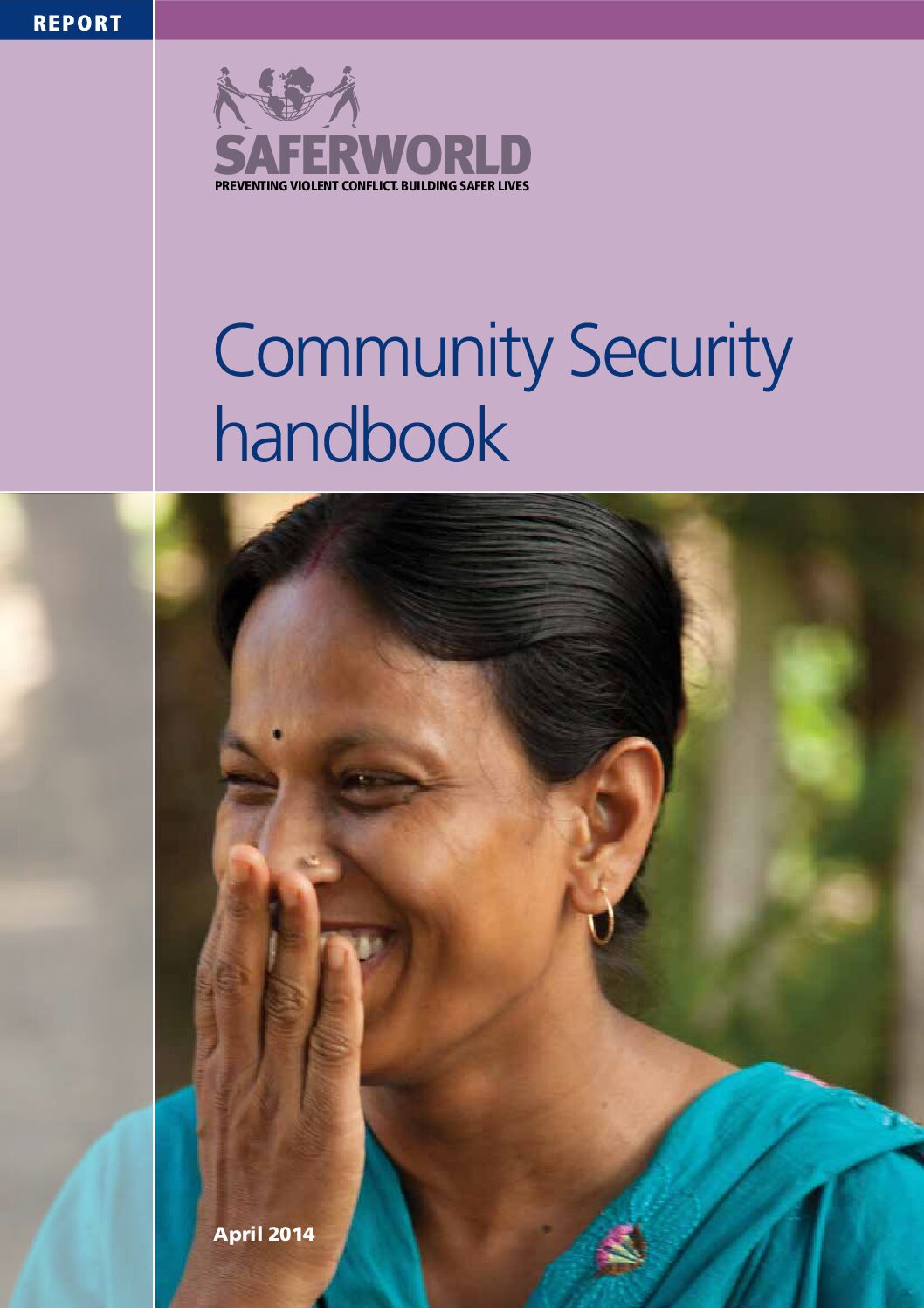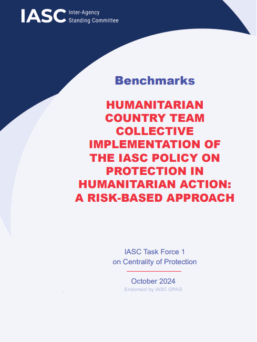Saferworld’s Community Security Approach–An example of continuous, context-specific protection analysis based on community perspectives on safety
Saferworld is an international NGO that implements community security programming globally–see their handbook here. While they use slightly different terms (e.g. “community security”), their approach is very much in line with Key Element #1 of Results-Based Protection in that it promotes a participatory approach to monitoring and evaluation–based on an adapted outcome harvesting methodology–with the communities themselves determining the dimensions to be measured. Saferworld’s Community Security Approach addresses insecurity at three levels and conducts measurement at all of them: community/local level, sub-national/district level, and national level.
- Community/local level:
Saferworld works with the community to set up a Community Security Working Group (CSWG), the community identifies security concerns and generates action plans, and determines how to monitor progress and measure success.
- Sub-national and national level
Research and advocacy is used to link local improvements to the sub-national and national levels to promote policy change that draws on the local experience.
At the community and local level, Saferworld uses a range of participatory methods and tools–depending on the context–to work together with community members on identifying and prioritising communities’ security problems and needs, driven from their own perspective. After the community identifies problems, Saferworld supports them to prioritise their most pressing needs.
Regular participatory monitoring, evaluation of change, and learning about what works, are central features of Community Security at the local level. While working through the process of developing CSWGs, identifying security concerns, prioritising them and creating action plans, Saferworld and the community also agree on how they will monitor progress and measure success. Integrating this into the planning process, rather than thinking about this as a separate M&E exercise, is essential for the community to retain a level of agency and leadership in the process.
Measuring community security combines both perception-based data (e.g. sense of security) with more tangible dimensions of security (e.g. number of attacks on the community). Saferworld harvests outcomes on an ongoing basis through semi-structured meetings with the CSWGs as well as through annual evaluation meetings. During the action planning stage, Saferworld encourages communities to pinpoint what changes they want to measure (indicators), what information they can collect, where they will find it, and who will be responsible for it.
Saferworld’s approach reinforces that everyone has a role to play in collecting and analysing data and evidence to analyse change. This enables and encourages staff to become experts at spotting change and finding ways to impact security.
In humanitarian crises, it may seem like positive changes can easily generate additional unforeseen negative effects. This approach allows Saferworld to surface these negative effects early, and discuss how to mitigate them, or adapt activities as needed. Lessons learned inform new program cycles and reprioritise the communities’ needs based on any changes. This cycle continually reinforces itself and provides the basis for communities to improve their efforts to identify and address causes of insecurity.



